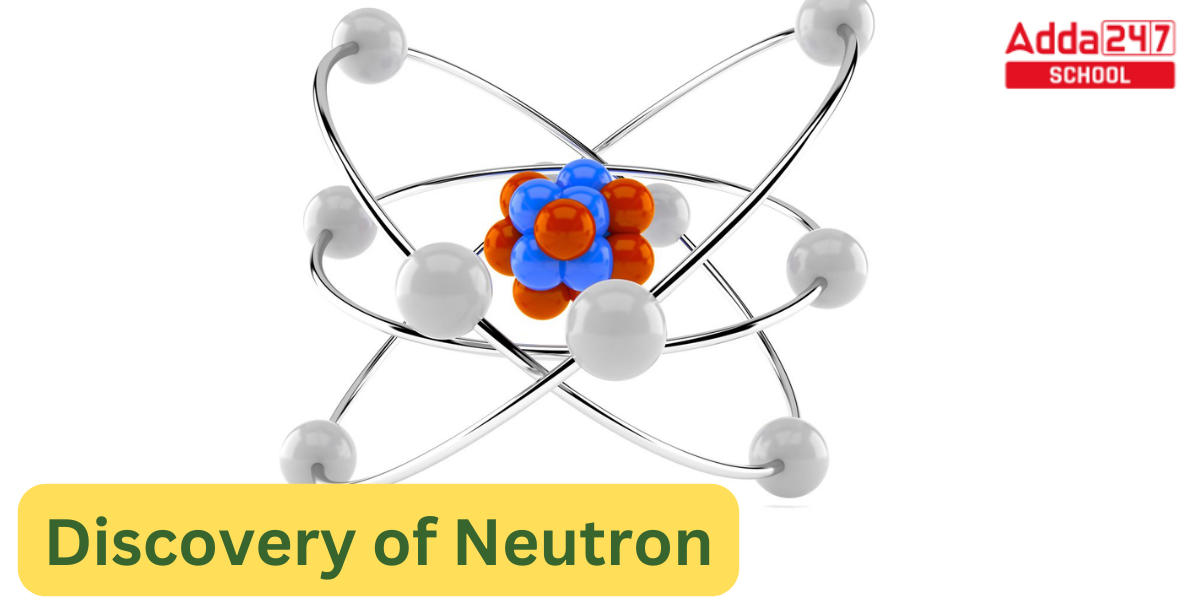Table of Contents
Who discovered Neutron? – Class 9 and 11
The neutron is a subatomic particle with the symbol n or n0 that is slightly heavier than a proton and has a neutral charge (one that is neither positive nor negative). Atomic nuclei consist of protons and neutrons. Protons and neutrons are both referred to as “nucleons” because of how similarly they function inside the nucleus and because they both have masses that are about equal to one atomic mass unit. Nuclear physics explains their interactions and characteristics. Each proton and neutron is made up of three quarks, hence they are not fundamental particles.
Who Discovered Neutron and When?
- The amazing advancements in atomic physics that took place in the first half of the 20th century, which finally resulted in the development of the atomic bomb in 1945, are centred on the narrative of the neutron’s discovery and its attributes.
- The atom in the 1911 Rutherford model was composed of a sizable cloud of negatively charged electrons surrounding a small, massively positively charged nucleus.
- Ernest Rutherford proposed that the nucleus was made up of positive protons and neutrally charged particles in 1920.
- These particles were thought to be a proton and an electron that were somehow bonded together.
- Because it was known that beta radiation was made up of electrons emitted from the nucleus, it was supposed that electrons resided within the nucleus.
A number of publications made proposals similar to Rutherford’s about the neutral proton-electron combination around the same time, and American chemist W.D. Harkins gave the hypothetical particle its first name as a “neutron” in 1921. The name is derived from the Greek suffix -on and the Latin root neutralis (neuter) (a suffix used in the names of subatomic particles, i.e. electron and proton). But as early as 1899, there were literary references to the word neutron in relation to the atom.
What is Electron Configuration of elements?
Who discovered Neutron in Chemistry?
James Chadwick is credited with the final discovery of Neutron, but there were many other scientist who contributed to the eventual discovery of Neutron.
Walther Bothe and Herbert Becker discovered in 1931 that beryllium, boron, or lithium would experience an unusually penetrating radiation when exposed to polonium’s alpha particles. Bothe and Becker assumed it to be gamma radiation since the radiation was not affected by an electric field. The next year, Irène and Frédéric Joliot-Curie in Paris demonstrated that this “gamma” radiation discharged extremely energetic protons when it struck paraffin or any other substance containing hydrogen. The gamma ray explanation did not convince Rutherford or James Chadwick at the Cavendish Laboratory in Cambridge.
Chadwick carried out a series of experiments fast, demonstrating that the new radiation was made up of uncharged particles with a proton-like mass. Neutrons were these spectra. For this finding, Chadwick received the 1935 Nobel Prize in Physics.
Mass of Electron, Proton, and Neutron in g, kg, mev, amu
Who discovered Neutron in Which Year?
Sir James Chadwick, an English physicist who lived from 20 October 1891 to 24 July 1974, won the 1935 Nobel Prize in Physics for discovering the neutron. He completed the MAUD Report’s final draught in 1941, which prompted the American government to launch significant atomic bomb research initiatives. During World War II, he served as the leader of the British team that worked on the Manhattan Project. In 1945, he received a knighthood in Britain for his contributions to physics.
Carbon dioxide Formula, Molar Mass and Molecular Weight
Who Discovered Intrinsic Properties of Neutron for Class 9 and 11 Students?
Mass of Neutron
Since a neutron has no electric charge, its mass cannot be directly calculated by mass spectrometry. However, since the masses of a proton and a deuteron can be determined using a mass spectrometer, the mass of a neutron may be determined by deducting the masses of the two particles. The result is the neutron’s mass plus the deuterium’s binding energy (expressed as a positive emitted energy).
massneutron = 1.008644904(14) Da
or
massneutron = 939.56563(28) MeV/c2
Charge of Neutron
The neutron has zero electric charge overall (e). This zero value has undergone scientific testing, and the current experimental limit for the neutron’s charge is equal to −2(8)×10−22 e, or −3(13)×10−41 C. Given the uncertainties inherent in the experiment, this value is consistent with zero (indicated in parentheses). The proton has a charge of +1 e in contrast.
Magnetic Moment of Neutron
The magnetic moment of a neutron is not zero even though it is a neutral particle. Magnetic fields have an impact on the neutron but not electric fields. Luis Alvarez and Felix Bloch at Berkeley, California, made the first direct measurement of the neutron’s magnetic moment in 1940. Alvarez and Bloch discovered that the neutron’s magnetic moment is n=1.93(2)μN, where μN is the nuclear magneton.
- The neutron’s internal charge distribution and quark substructure are revealed by the neutron’s magnetic moment.
- The neutron is made up of two down quarks (charge 1/3 e) and one up quark (charge +2/3 e) in the quark model for hadrons.
- The magnetic moments of the neutron’s component quarks can be added to represent the neutron’s magnetic moment. The computation makes the assumption that each quark operates as a pointlike Dirac particle with its own magnetic moment.
- The neutron’s magnetic moment can be conceptualised simply as the vector sum of the magnetic moments of the three quarks plus the orbital magnetic moments brought on by the motion of the three charged quarks inside the neutron.


 JEE Advanced 2024 Information Brochure (...
JEE Advanced 2024 Information Brochure (...
 ICAI CA May Admit Card 2024 Out for Fina...
ICAI CA May Admit Card 2024 Out for Fina...
 HBSE 10th Result 2024 Date, Check Haryan...
HBSE 10th Result 2024 Date, Check Haryan...














